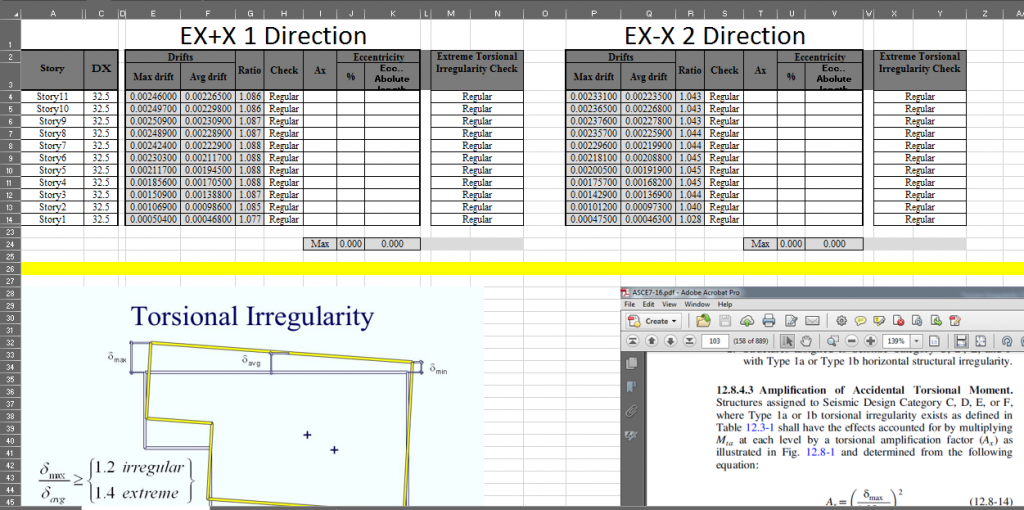TORSION IRREGULARITY
a) Torsional Irregularity: Torsional irregularity is defined to exist where the maximum story drift, computed including accidental torsion with Ax =1.0, at one end of the structure transverse to an axis is more than 1.2 times the average of the story drifts at the two ends of the structure. Torsional irregularity requirements in the reference sections apply only to structures in which the diaphragms are rigid or semi-rigid. b) Extreme Torsional Irregularity: Extreme torsional irregularity is defined to exist where the maximum story drift, computed including accidental torsion with Ax =1.0, at one end of the structure transverse to an axis is more than 1.4 times the average of the story drifts at the two ends of the structure. Extreme torsional irregularity requirements in the reference sections apply only to structures in which the diaphragms are rigid or semirigid.
To compute Torsional Irregularity and Extreme Torsional Irregularity, as specified in ASCE 7-16 Table 12.3-1, item 1a and 1b must be performed and shown in this video.
Structures assigned to Seismic Design Category C, D, E, or F, where Type 1a or 1b torsional irregularity exists as defined in Table 12.3-1 shall have the effects accounted for by multiplying M at each level by a torsional amplification factor (Ax)
The torsional amplification factor (Ax) shall not be less than 1 and is not required to exceed 3.0. The more severe loading for each element shall be considered for design.




 Visit
Visit 
Good
good